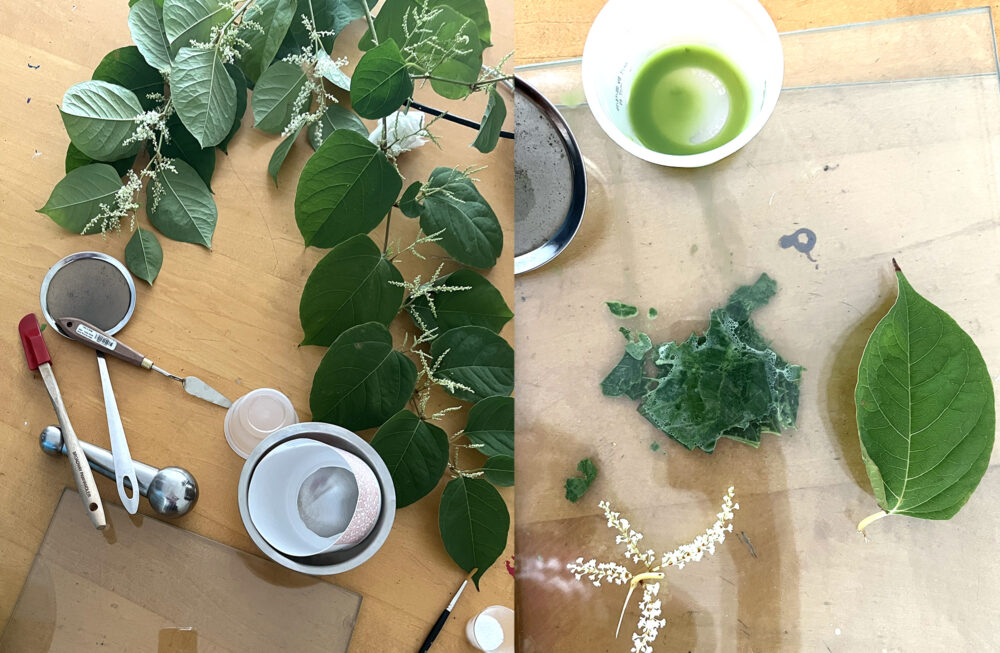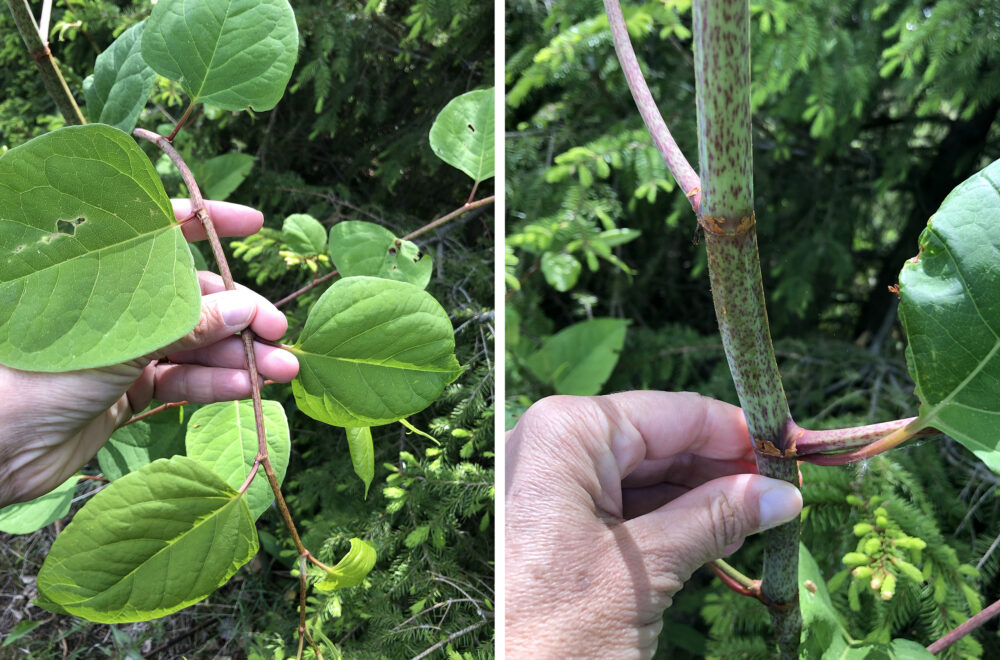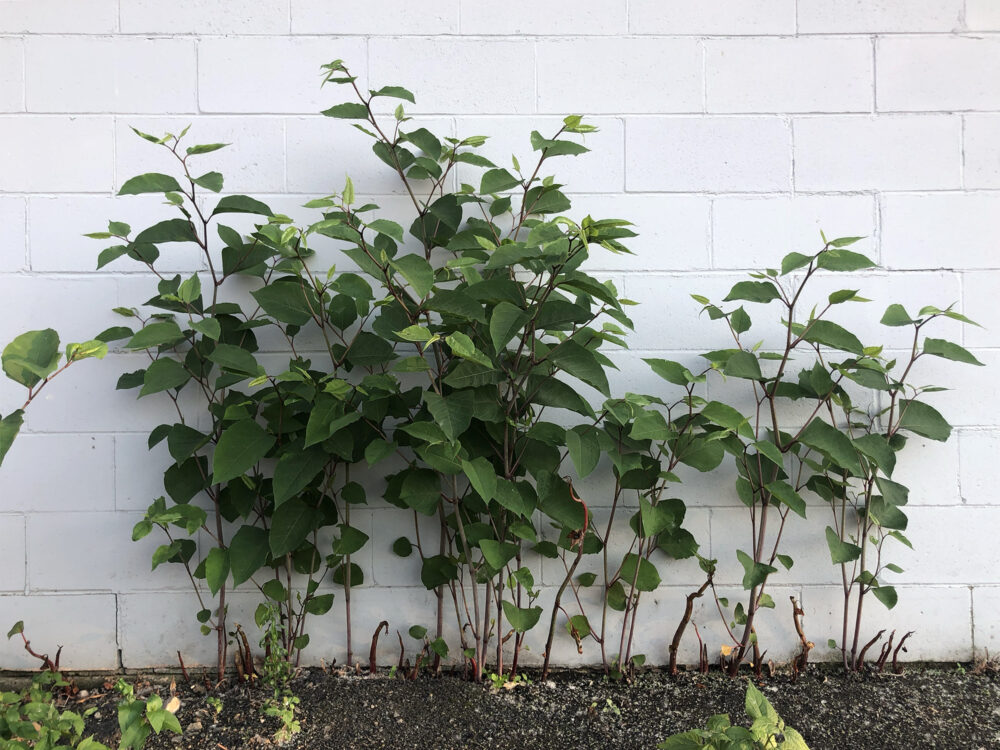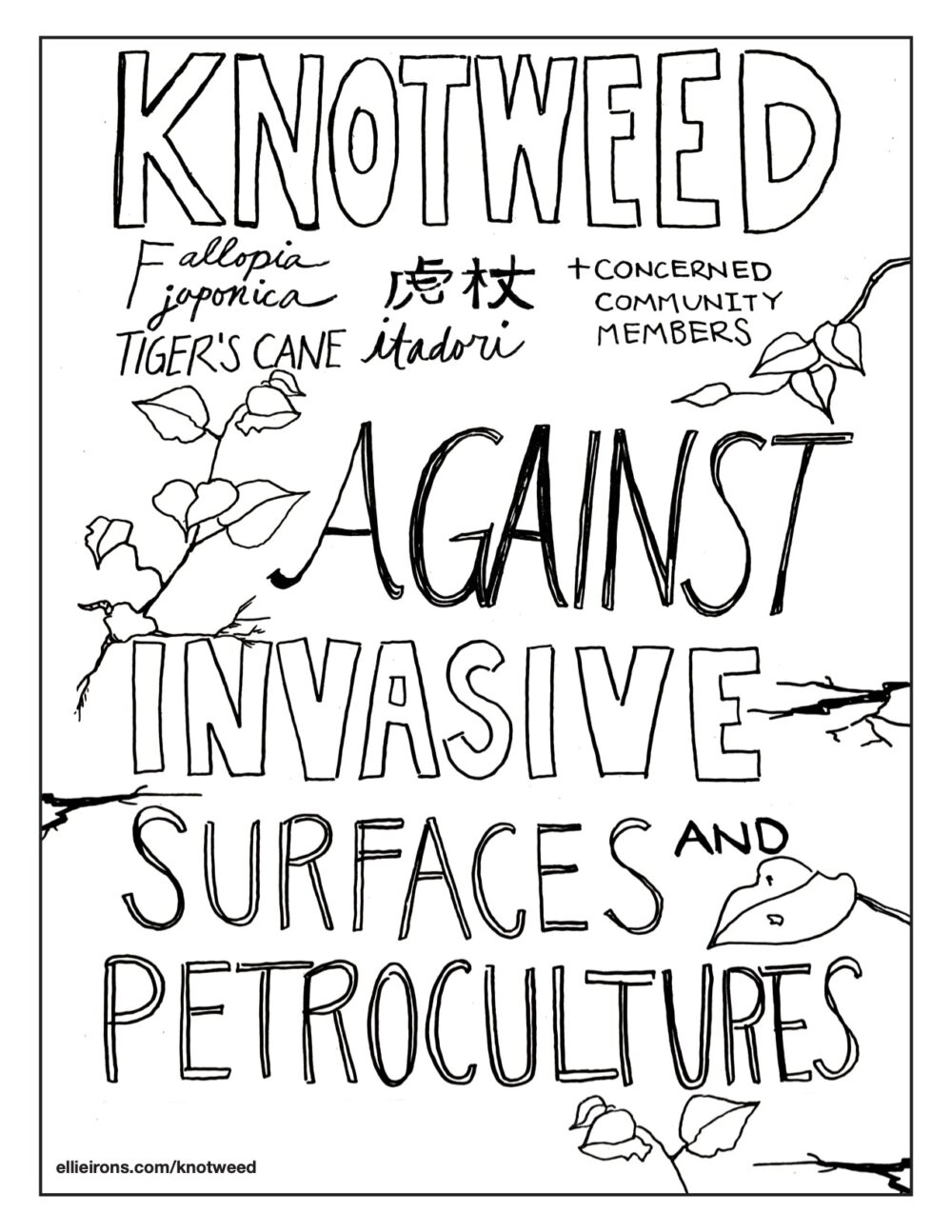Japanese Knotweed/Hǔzhàng/虎杖/Reynoutria japonica: In their native China, knotweed is known by the simplified Chinese characters 虎杖, which translate to tiger (虎) and cane (杖); tiger cane is sometimes used as an English common name for the plant in reference to traditional Chinese medicine. Using the mod- ern Latin alphabet, 虎杖 is written as Hǔzhàng. The Latin name Reynoutria japonica was originally given by Dutch botanist M. Houttuyn in his New Genera and New Species of Plants, 1773-1783. Of course they were only new to Houttuyn and his contemporaries in Europe, as they had long been known, valued, and named in their places of origin.

Notorious for acting invasively outside of their native range, Japanese knotweed was brought here pur- posefully as an ornamental in the late 19th century from the United Kingdom (where they were similarly introduced in 1825 from Japan). They are in the buckwheat family, and thus a “wild crop relative,” meaning they share a common ancestor with our cultivated buckwheat, and might possess genetic information that could be beneficial in meeting future cultivation challenges (Ford-Lloyd ed. al.). They have long been used as a medicinal in traditional Chinese medicine, and are becoming more widely known medicinally in their naturalized range. Their tissues contain resveratrol, a plant compound known for anti-inflammatory effects, and knotweed extract is being used and studied for relief of the persistent inflammatory effects caused by Lyme disease, which is becoming increasingly common throughout the areas knotweed is spreading in the Americas. Knotweed shoots are edible for humans—and tasty!—when they first emerge in the spring, and their blossoms are enjoyed as a late season source of nutrition for pollinators. Beekeepers have started to produce knotweed honey in the Northeastern United States, a practice that is likely practiced in other regions where the plant is common.

The plant is also known for forming dense stands and emerging through concrete and other human-made infrastructure, fomenting a degree of hysteria that has largely been debunked around their ability to destroy the foundations of buildings (Fennell et al). In the United Kingdom there are still cases of lenders refusing to provide mortgages if knotweed is present on the property, although property surveyors have begun to push back, insisting that knotweed is treatable and rarely causes severe damage. Whether the “treatment” is worth the effort is questionable—complete removal requires digging out the plant including all rhizomes, a process that creates conditions knotweed loves: open, disturbed soil.

